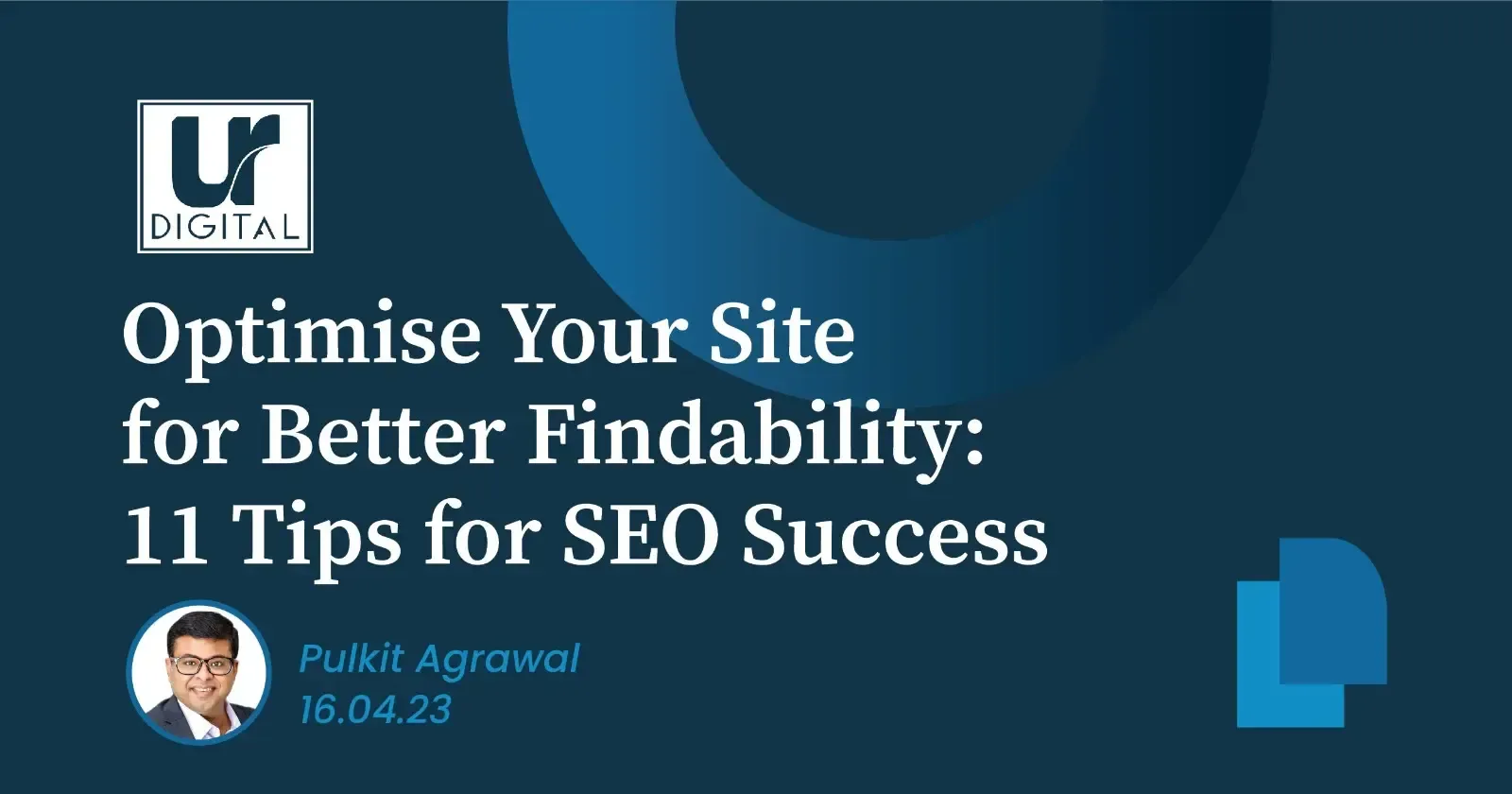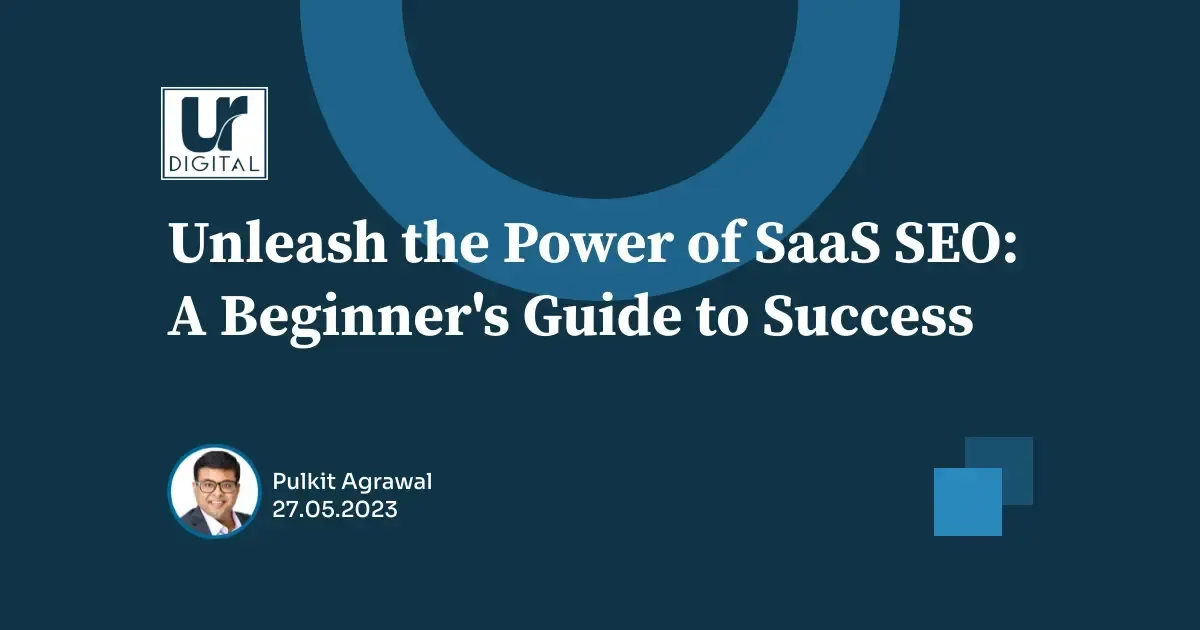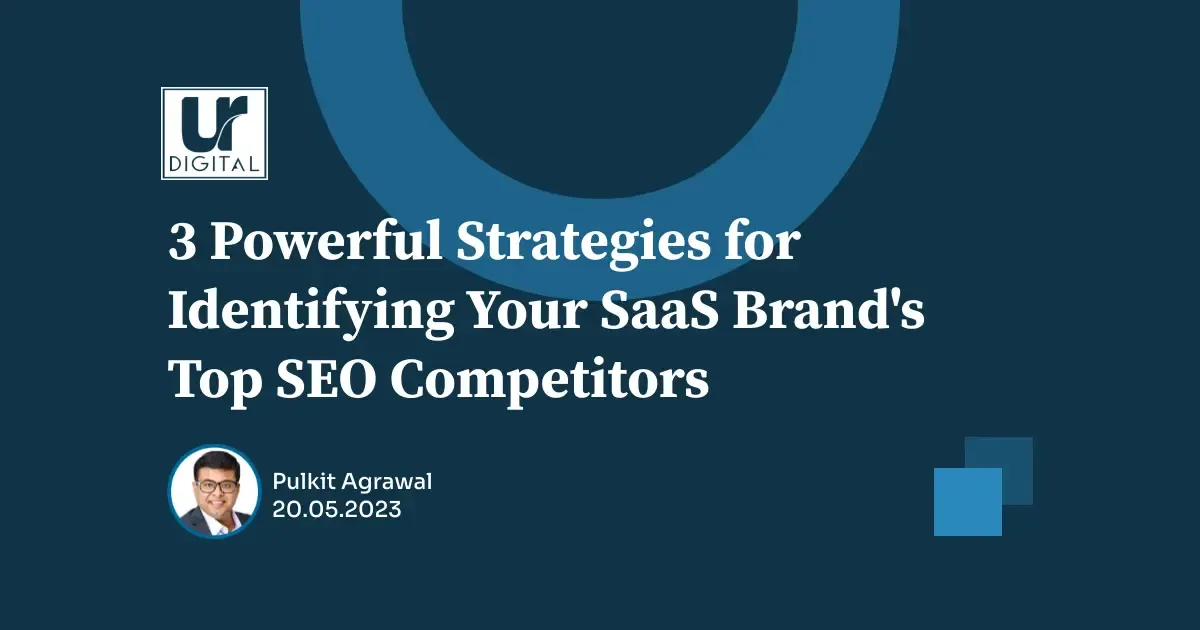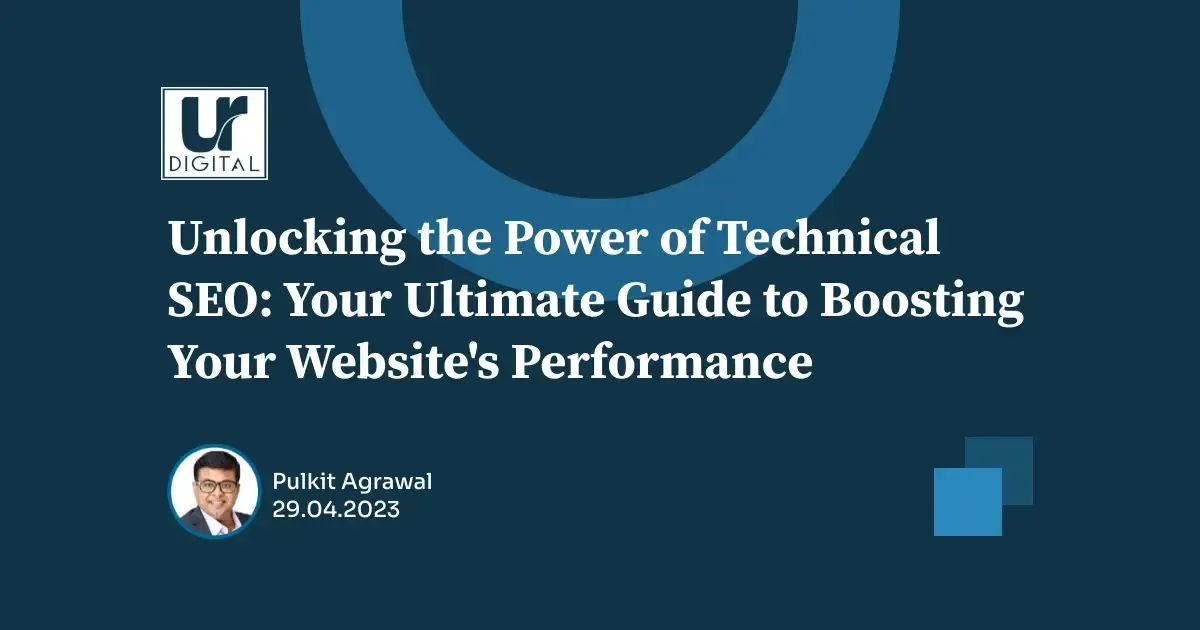4 Key Factors For Successful SaaS Competitor Analysis
Consider Sharing
Software as a Service aka. the SaaS industry is highly competitive, and staying ahead of the curve is crucial for every business' online success. Conducting a thorough SaaS competitor analysis is essential for gaining valuable insights into the market landscape, identifying opportunities, and refining your product or service offerings.
A SaaS competitor analysis helps you examine your competitors' products, strategies, market positioning, and customer feedback systematically. So, whether you're a start-up aiming to disrupt the industry or an established SaaS provider seeking to enhance your offerings, buckle up as we delve into the world of SaaS competitor analysis.
But before we jump into the specifics, let's briefly understand the importance of conducting such an analysis.
Why is SaaS Competitor Analysis Important?
The SaaS market is a bustling ecosystem, with new players constantly entering the arena. Conducting a competitor analysis provides you with a strategic edge by enabling you to:
- Identify your direct and indirect competitors: Researching the SaaS market landscape helps you gain insights into your competition and understand the players who pose the most significant threat to your business. You can identify emerging trends, industry standards, and customer expectations.
- Differentiation: Competitor analysis helps you identify your unique selling propositions (USPs) and areas where you can differentiate your SaaS offering. Understanding what sets your competitors apart allows you to position your product effectively.
- Market Positioning: By examining your competitors' market positioning, you can identify gaps in the market and target specific customer segments. This helps you tailor your marketing messages and reach the right audience.
- Strategy Refinement: Analysing your competitors' marketing and sales strategies provides insights into successful tactics, enabling you to refine your own approach.
- Customer Insights: Analysing customer feedback and reviews about your competitors' products can highlight areas where they excel or fall short. This knowledge helps you enhance your own product and customer experience.
- SWOT analysis: A comprehensive SWOT analysis helps you understand your competitors' strengths, weaknesses, opportunities, and threats, allowing you to make informed strategic decisions.
- Develop a competitive advantage: Armed with the knowledge gained from competitor analysis, you can leverage your strengths, address weaknesses, and identify opportunities to develop a unique value proposition that sets your SaaS offering apart.
In the following sections, we will dive deeper into each point, providing practical steps and actionable insights to guide your analysis process.
Essential Factors for Competitor Analysis
1. Identifying Key Competitors
Researching the SaaS market landscape
Researching the market will give you insights into the overall industry trends, emerging technologies, and your competitive environment. Here's how you can conduct effective market research:
- Industry reports and publications: Stay updated with industry reports, market research studies, and publications that provide valuable insights into the SaaS market. These reports often highlight market size, growth rates, and key players in specific segments, helping you identify potential competitors.
- Online communities and forums: Participate in online communities, forums, and industry-specific groups to gain insights from discussions, trends, and challenges faced by customers and competitors. Engaging with professionals in the field can provide firsthand information about emerging players and market dynamics.
- Social media monitoring: Monitor social media platforms like Twitter, LinkedIn, and industry-specific forums to stay informed about SaaS companies making waves in the market. Follow influential industry thought leaders, SaaS influencers, and relevant hashtags to stay updated with the latest news and trends.
Determining Direct and Indirect Competitors:
Direct competitors are those who offer similar products or services to the same target audience, while indirect competitors may provide alternative solutions to the same problem. Here's how you can identify both types of competitors:
- Product/service similarity: Identify companies offering products or services that directly compete with your SaaS offering. Look for similarities in functionality, features, and target audience. Direct competitors typically serve the same market segment and address similar pain points.
- Keyword research: Conduct keyword research to identify companies ranking for relevant keywords in search engine results pages (SERPs). Analyse the organic search results to uncover competitors actively targeting the same keywords as you. This can help identify both direct and indirect competitors.
- Customer perception: Listen to your customers and understand their perception of your competition. Ask for feedback and inquire about alternatives they considered before choosing your product. This can reveal indirect competitors that may have been overlooked during your initial analysis.
Tools and Techniques for Competitor Identification:
You can leverage various tools and techniques to streamline the process of identifying competitors. These resources can provide valuable insights and save time in your research:
- Competitive intelligence tools: SEMrush and Ahrefs provide comprehensive competitor analysis, including traffic data, keywords, backlinks, and marketing strategies. These tools can help you identify competitors, analyse their online presence, and benchmark your performance against them.
- Social media monitoring tools: Tools such as Hootsuite, Brandwatch, and Mention allow you to monitor social media platforms for mentions of your competitors. You can track their social media activity, engagement levels, and sentiment analysis to gauge their popularity and customer satisfaction.
- Industry directories and listings: Explore industry directories and listings specific to the SaaS sector. Websites like G2, Capterra, and Software Advice feature extensive listings of SaaS providers, allowing you to discover direct and indirect competitors.
2. Analysing Competitor Products and Features
Evaluating Competitor Products and Services:
To start, thoroughly evaluate your competitors' products and services. If available, sign up for their trials or demos and closely examine what they offer. Consider the following factors during your evaluation:
- Product/service quality: Assess the overall quality of their offering. Look for factors such as user experience, ease of use, reliability, performance, and security. Pay attention to any differentiating features or innovations that set them apart.
- Target market fit: Determine the target market they cater to. Assess whether their product/service aligns with specific industries, business sizes, or use cases. This information can help you identify potential gaps or opportunities in the market.
- Integration capabilities: Explore the compatibility and integration options of their product/service with other commonly used tools or platforms.
This is important to understand how well their solution fits into the existing tech stack of potential customers.
Identifying Unique Selling Propositions (USPs):
Identifying your competitors' unique selling propositions (USPs) will help you understand how they position themselves in the market and what sets them apart from others. Consider the following aspects when identifying their USPs:
- Key features and functionalities: Identify the standout features and functionalities of their product/service. Look for innovations, automation capabilities, customisation options, or any other unique aspects that provide a competitive advantage.
- Value proposition: Analyse the value proposition they communicate to customers. Is their focus on cost savings, time efficiency, scalability, or any other specific benefit? Understanding their value proposition helps you gauge their competitive positioning.
- Target audience alignment: Evaluate how well their USPs align with their target audience's needs and pain points. This alignment is crucial for effectively capturing and retaining customers.
Analysing Features, Functionalities, and Pricing Models:
A comprehensive analysis of your competitors' features, functionalities, and pricing models provides valuable insights for your own strategy. Consider the following factors during your analysis:
- Feature comparison: Compare the features offered by your competitors. Look for both core functionalities and additional features that they provide. Note any gaps or areas where you can potentially differentiate yourself.
- Functionality depth: Assess the depth and sophistication of the functionalities offered. Evaluate whether they have a comprehensive solution that covers all essential aspects or if there are limitations that you can leverage as a competitive advantage.
- Pricing structure: Analyse their pricing models and plans. Evaluate factors such as pricing tiers, subscription options, contract lengths, and any unique pricing strategies they employ. This analysis helps you understand their pricing positioning in the market.
- Value for money: Consider the perceived value customers get for their price. Look at the pricing in relation to the features, functionalities, and benefits offered by competitors. This analysis helps you assess how your pricing strategy compares.
3. Evaluating Marketing and Sales Strategies
Analysing Competitor's Marketing Channels and Campaigns:
Start by analysing the marketing channels and campaigns utilised by your competitors. This examination will help you understand their target audience reach and engagement. Consider the following factors during your analysis:
- Online presence: Assess their website design, user experience, and overall online presence. Look for elements like clear messaging, compelling visuals, and effective CTAs. Evaluate how they showcase their product/service and capture leads.
- Social media presence: Evaluate their presence on Facebook, Twitter, LinkedIn, and Instagram. To evaluate their social media marketing efforts, analyse their engagement, post frequency, and content quality.
- Advertising and paid campaigns: Examine their utilisation of online advertising channels, including PPC campaigns, display ads, and sponsored content. Identify the platforms and channels where they invest in paid promotions and assess their messaging and targeting strategies.
Assessing Competitor's Content Marketing and SEO Strategies:
Evaluate your competitors' content marketing and SEO strategies to gain insights into their organic visibility, thought leadership, and content distribution methods. Consider the following aspects during your assessment:
- Content types and formats: Analyse the types of content your competitors produce, such as blog posts, whitepapers, case studies, videos, or webinars. Assess the quality, depth, and relevance of their content. Look for opportunities to differentiate yourself by providing unique and valuable content.
- SEO optimisation: Examine their on-page and off-page SEO tactics. Evaluate their keyword targeting, meta tags, URL structures, internal linking strategies, and backlink profiles. This analysis helps you understand their organic search visibility and identify potential SEO gaps or opportunities.
- Thought leadership and industry presence: Determine how your competitors establish themselves as thought leaders in the industry. Look for contributions to industry publications, speaking engagements at conferences, participation in webinars, and other activities that position them as authorities in the field.
Evaluating Sales Processes and Customer Acquisition Tactics:
Assessing your competitors' sales processes and customer acquisition tactics helps you understand how they convert leads into paying customers. Consider the following factors during your evaluation:
- Sales funnels and conversion strategies: Analyse your competitors' steps to convert prospects into customers. Look for lead generation techniques, nurturing processes, and closing strategies they employ. Assess the effectiveness of their sales funnels and identify areas for improvement or differentiation.
- Pricing and packaging: Evaluate their pricing models, subscription plans, and any promotional offers. Determine how they position their pricing in relation to the value they provide. Analyse their packaging options and assess the perceived value of their offerings.
- Customer onboarding and support: Examine how your competitors onboard new customers and provide ongoing support. Look for resources, tutorials, documentation, and customer success programs they offer. Assess the effectiveness of their support channels and response times.
4. SWOT Analysis of Competitors
Conducting a Comprehensive SWOT Analysis:
To conduct a comprehensive SWOT analysis, follow these steps:
- Gather information: Collect relevant data about your competitors from various sources, including their websites, social media, customer reviews, and industry reports. This will provide a comprehensive understanding of their business.
- Identify strengths: Analyse your competitors' strengths, such as their unique features, strong brand presence, customer base, or financial stability. These are factors that give them a competitive advantage.
- Identify weaknesses: Evaluate the weaknesses or limitations of your competitors, such as outdated technology, poor customer support, or a narrow product range. These areas of weakness present opportunities for you to differentiate yourself.
- Identify opportunities: Look for external opportunities that your competitors are capitalising on, such as emerging market trends, new customer segments, or technological advancements. Identifying these opportunities can help you identify growth areas.
- Identify threats: Assess the threats your competitors face, such as increasing competition, changing customer preferences, or regulatory challenges. Understanding these threats can help you anticipate potential obstacles and prepare accordingly.
Leveraging Insights to Improve Your Own SaaS Offering:
The insights gained from the SWOT analysis of your competitors can be used to improve your own SaaS offering. Here's how you can leverage these insights:
- Differentiation: Identify areas where you can differentiate yourself from your competitors based on their weaknesses. Focus on addressing customer pain points or offering unique features that set you apart.
- Market gaps: Use the opportunities identified during the SWOT analysis to identify untapped market segments. Develop strategies to cater to these segments and position your offering as a solution to their specific needs.
- Trends and innovations: Align your SaaS offering with emerging trends and incorporate innovative features or functionalities that cater to evolving customer demands. Stay ahead of the competition by anticipating and adapting to market changes.
- Risk mitigation: Anticipate and prepare for potential threats by developing strategies to mitigate similar risks in your own business. This proactive approach helps you navigate challenges effectively.
Conclusion
A thorough competitor analysis is crucial for success in the SaaS industry. By understanding competitors' offerings, marketing strategies, and strengths, you can differentiate your own SaaS product and refine your customer acquisition tactics. Continuously monitoring and adapting to the competitive landscape is key to maintaining a competitive advantage. Implement the insights gained from the analysis to position your SaaS offering effectively and achieve long-term success.
Ready to gain a competitive edge in the SaaS industry? Book your free 30 minutes SEO consulting and leverage the power of comprehensive competitor analysis to optimise your SaaS offering and drive sustainable growth. Let's outperform your competitors and achieve your business goals together. Get in touch with UR Digital today!
Author
PULKIT
AGRAWAL
FOUNDER & MANAGING DIRECTOR
Profile
My name is Pulkit Agrawal and I'm the Founder and Managing Director of
UR Digital. I invest my soul and imagination into every client. I have worked across many industries, over the past 15 years and countless highly successful SEO projects and campaigns.
Skills and Achievements
Multi-lingual SEO (English, German, Cantonese, Mandarin and Japanese). Google, Semrush, BEC Australia and LinkedIn certified. Member Entrepreneur Leadership Network. Guest Author Entrepreneur, Semrush & Inside Small Business.
Connect with me on
Consider Sharing











